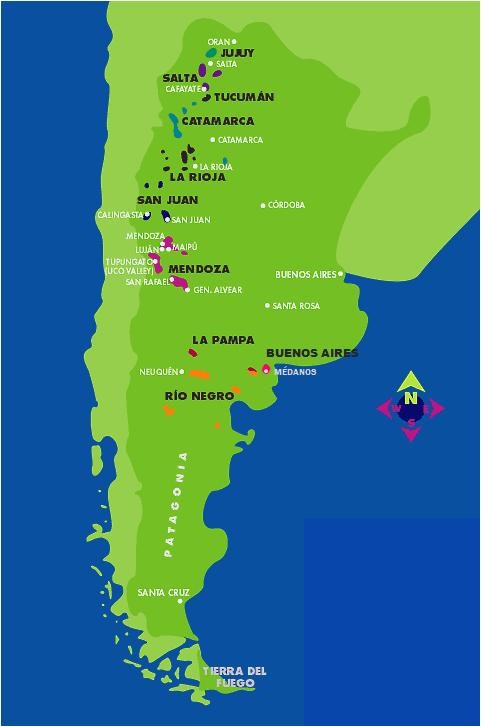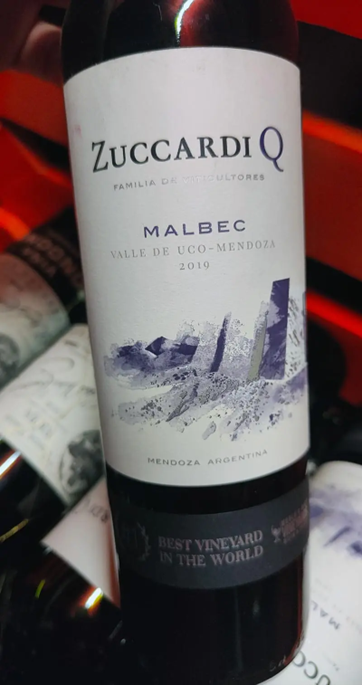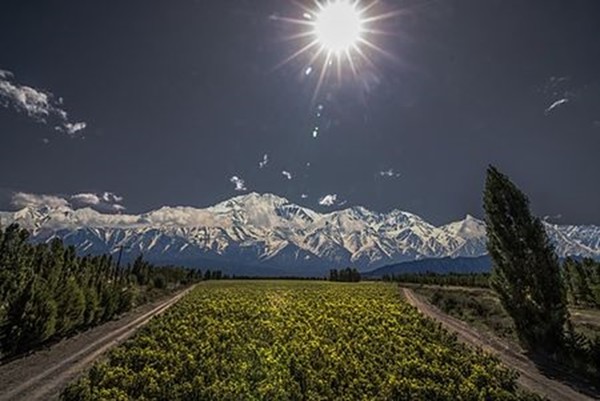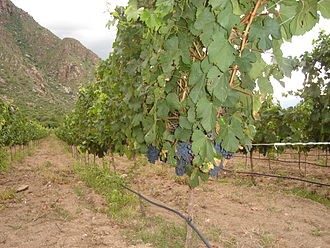Mendoza Wine

[아츠앤컬쳐] 오래 전 칠레의 뛰어난 레드와인에 대하여 다루었는데, 다시 남미의 아주 광활한 나라 아르헨티나로 돌아가 본다. 아르헨티나는 볼리비아 및 파라과이 국경에서 남쪽으로 얼음이 뒤덮인 남극해까지 약 3,800km가량 뻗어 있으며, 서쪽으로는 안데스 산맥의 높고 눈 덮인 봉우리가 칠레와 경계를 이룬다.
포도재배는 16세기에 기독교 선교사들이 스페인에서 현재 아르헨티나의 산후안과 멘도사 지역으로 포도 품종을 가져와 소개하면서 시작되었다. 1556년에 이들 선교사 중 한 명인 후안 세드론 신부가 이곳에 최초의 적포도인 리스탄 프리에토를 심었다. 유명한 와인 학자 카렌 맥닐과 잰시스 로빈슨에 따르면 동일한 리스탄 프리에토가 칠레의 파이스, 캘리포니아의 미션 및 아르헨티나의 크리오야 치카의 조상 포도일 것이라고 한다.

스페인 정착민들은 곧 아르헨티나의 안데스 산맥 가까이에 햇볕이 잘 들고 건조한 고지대가 포도 재배에 이상적인 장소임을 깨달았는데, 오늘날에도 대부분의 아르헨티나 와인 산지는 아르헨티나 서부 산악 지역에 위치한다.
이들 와인 산지 중에서 가장 잘 알려진 곳은 의심할 여지없이 멘도사로, 아메리카 대륙에서 가장 높은 산인 아콩카과에서 멀지 않은 고지대 고원에 위치해 있다. 이곳의 포도원은 해발 600미터에서 1500m 사이에 있으며, 이 고도가 이 지역의 화창하고 건조한 기후를 완화시키는 역할을 한다. 멘도사 와인 지역은 뉴욕 주보다 약간 더 크지만 포도밭은 대부분 거의 멘도사 시 주변과 마이푸, 루한 데 쿠요, 우코 밸리 지역에 펼쳐져 있다. 크리오야 그란데, 템프라니요, 카베르네 소비뇽 및 샤르도네는 멘도사 포도밭의 일부이지만 주요 포도 품종은 말벡이다.

말벡은 현재 아르헨티나에서 국가적 품종으로 유명하지만, 말벡 포도의 본고장은 프랑스 남서부의 작은 고대 마을인 꺄오흐에 가까운 와인 지역으로, 보르도 와인의 블렌딩에 허용되는 포도 중 하나인 “꼬” 또는 “오세루아”로 알려져 있다. 이 포도로 만든 레드와인은 강하고 탄닌이 세며, 프랑스어로 ‘뱅 누아’, ‘블랙 와인’이라고 불릴 만큼 어두운 색을 띤다.

거의 200년 동안 아르헨티나에서 재배된 말벡 포도는 멘도사 지역의 건조하고 서늘하며 햇볕이 잘 드는 안데스 기후로 인해 프랑스 포도 품종과는 상당히 다른 특성을 갖게 되었는데, 이러한 독특한 특성은 아르헨티나 말벡 와인에서도 발견된다. 보라색을 띤 강렬하고 깊은 루비 레드 컬러에 자두, 체리, 블랙베리의 향기로움과 은은한 스파이시 향이 느껴진다. 또한, 강렬하고 따뜻하며 호화로운 맛과 잘 익은 과일의 힌트가 날카로운 탄닌을 부드럽게 만들어 겹겹이 쌓인 고소한 풍미와 오래도록 기분 좋은 지속력을 선사해 준다.

Mendoza Wine
After telling the story of a remarkable Chilean red wine a long time ago, we return to South America, but to Argentina, a very vast country.
From the borders with Bolivia and Paraguay, Argentina extends roughly 3.800 kilometers southward to the icy Antarctic waters, while to the west the high, snowy peaks of Andes Mountain range separate it from Chile.

Viticulture began during the sixteenth century when it was introduced there by Christian missionaries, who brought grape varieties from Spain to the current Argentine provinces of San Juan and Mendoza. In 1556 one of these missionaries, Father Juan Cedron, planted the first vineyards of red Listán Prieto grapes right there. The same Listán Prieto, according to the renowned wine scholars Karen MacNeil and Jancis Robinson, would be the ancestor grape of Chile’s País, California’s Mission and Argentina’s Criolla Chica.
Those Spanish settlers soon realized that in Argentina the sunny, bone-dry highlands close to the Andes were the ideal places for viticulture, and even today most of Argentina’s wine regions are found in the western mountainous areas of the country.

Among these wine regions, the leading and best-known one is undoubtedly Mendoza, located on a high-altitude plateau not far from Aconcagua, the highest mountain in the Americas. Here, vineyards are planted between 600 and 1500 meters above the sea level and it is this altitude that mitigates the sunny, dry climate of the region. While Mendoza wine region is slightly larger than New York State, its vineyards span almost exclusively around the homonymous Mendoza City, in the areas of Maipú, Luján de Cuyo and in the Uco Valley. Criolla Grande, Tempranillo, Cabernet Sauvignon and Chardonnay are part of Mendoza’s vines landscape, but Malbec is its main grape variety.
Although it is nowadays famous in Argentina as a national variety, Malbec grapes ancestral home is a wine region close to Cahors, a tiny, ancient town in southwest France where it is known as “Cot” or “Auxerrois”, one of the grapes allowed in the blend of Bordeaux wine. The red wine made there with this grape is strong, very tannic, with such a dark color that it is called in French “vin noir”, “black wine”.

Grown in Argentina for almost two centuries, Malbec grapes have taken on significantly different characteristics from those of their French parent, due to the dry, cool, sunny Andean climate of Mendoza region, and these peculiar characteristics are also found in Argentine Malbec wines: an intense, deep ruby red color with purple hues; a fragrant aroma of plums, cherries, blackberries and subtle spicy notes. An intense, warm, sumptuous taste with hints of ripe fruit that soften the sharp tannins, giving these wines layered, savory flavors and a long, pleasant persistence.

글 | 에밀리아노 펜니지 Emiliano Pennisi
Lecture of the Italian Cultural Institute in Seoul, Sogang University lecturer of Italian language
Wine scholar and expert
He attended sommellier courses in Italy

